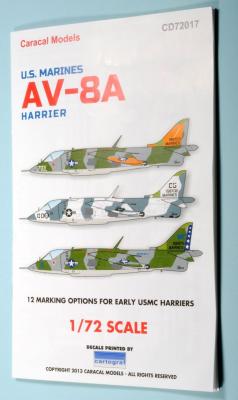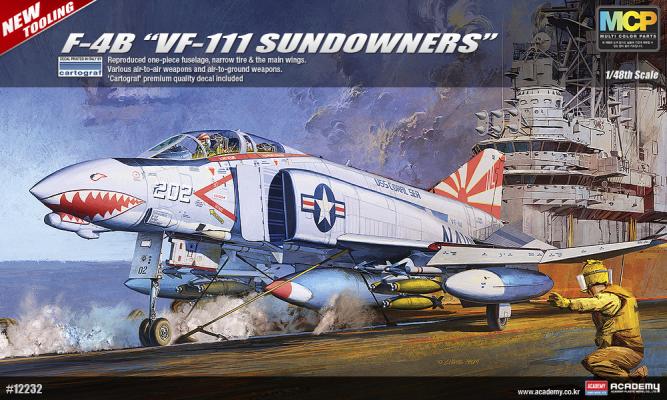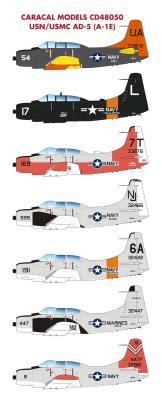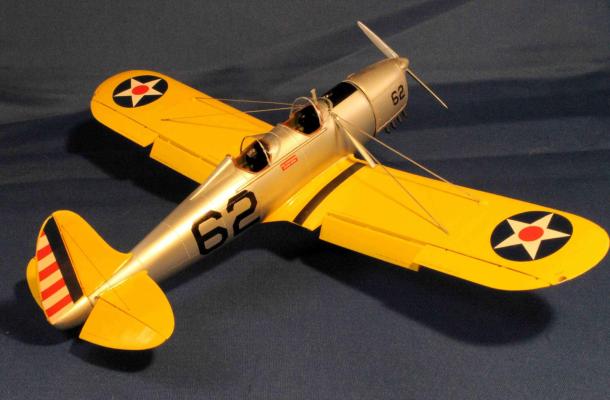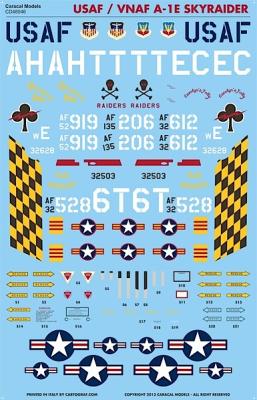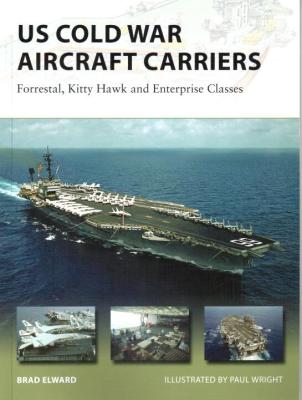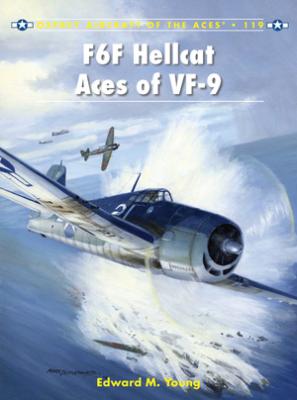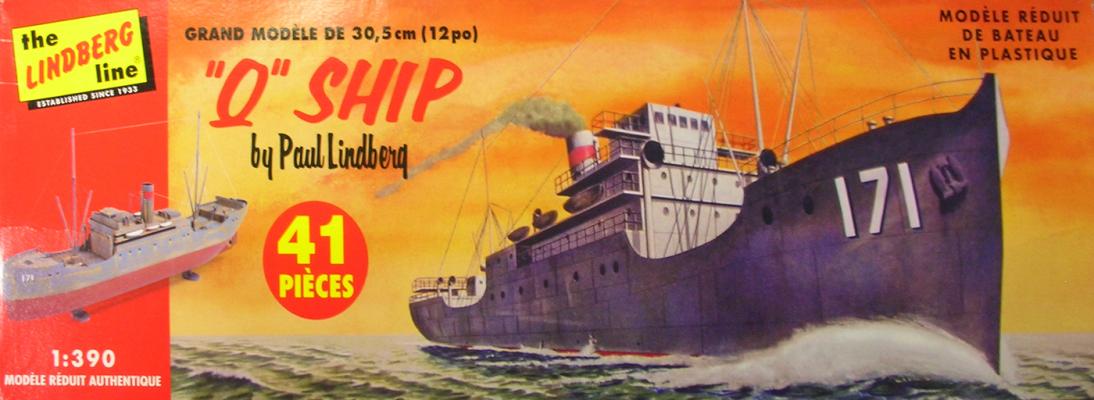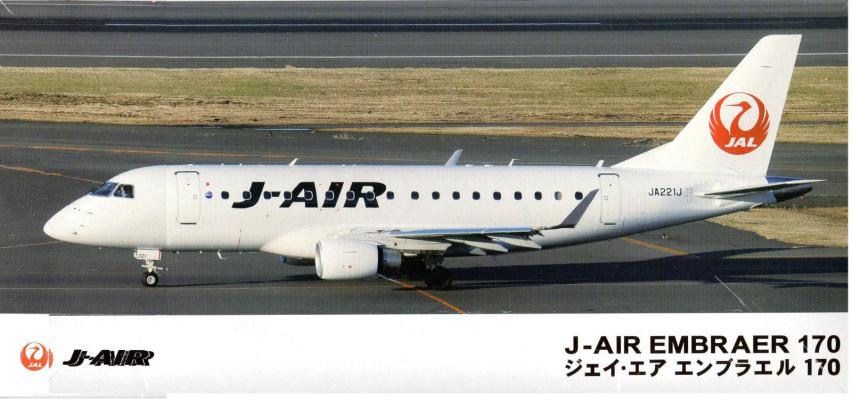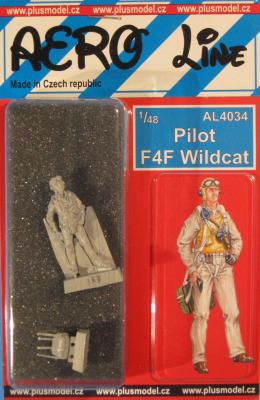When I purchased the new Airfix Harrier GR.1 kit in 1/72 scale, I did so with the intention of building it as the USMC AV-8A Harrier. I planned to cobble together suitable decals from my collection of spares, but didn’t have to when Caracal Models released a sheet just for this very purpose.
all 2014
Academy's first release in a new series of 1/48 scale Phantoms is an F-4B in VF-111 "Sundowners" markings. There are 15 spectacular sprue with one being clear. The rest are colored to the specific areas of the plane. the bottom parts are white, the top gray and metallic parts black. Panels lines are fine and there are some real innovations. For example, the engine exhausts are molded as a complete tube so there are no seams to fill and they look great. There is also a complete set of weapons with the needed bombs and missiles and a full set of drop tanks.
Caracal Models has released a second sheet for the 1/48 Revell (Matchbox) AD-5 molds. This sheet includes decals for seven aircraft
- AD-5 Skyraider BuNo 133878, VU-1
- AD-5 Skyraider BuNo 133893, NAS Los Alamitos
- AD-5 Skyraider BuNo 133876, NAS Seattle
- AD-5 Skyraider BuNo 132466, VA-125
- AD-5 Skyraider BuNo 132442, NAS Anacostia
- AD-5 Skyraider BuNo 132447, AES-12, USMC
- AD-5 Skyraider BuNo 132616, NATF
This is a very colorful sheet, as the airplanes were CONUS based and likely used in training missions, so be prepared to use your international orange paint. Stenciling is provided to build one aircraft.
Being a Cartograf decal sheet you know you’ll get good quality, thin and opaque decals. They are very glossy on the sheet and they have very little transparent carrier film around them minimizing the chances for silvering.
This is part two “The Build”, of my review; the kit review can be seen in an earlier posting.
I followed the instruction sheet using Fishers guide for colors and building sequence. The first thing I did was take inventory of all parts. I found I was missing a couple of struts. I emailed Paul Fisher of Fisher Models and within a few days had the replacement parts in hand. Excellent customer service. As suggested, I thoroughly washed all parts using Dawn soap and warm water and let them dry overnight. It took about an hour to “clean up” the parts; this involved some molding lines and a little flash to be removed. One thing about Fisher kits, his molding is excellent and you should have very little clean up to do.
Caracal Models has released a sheet for the 1/48 Revell (Matchbox) A-1E molds. This sheet includes decals for seven USAF and two VNAF aircraft (for an amazing total of 9 airplanes!).
The options on this decal sheet are:
- A-1E 132649, (Medal of Honor mission aircraft)
- A-1E 132619, "Carolyn's Folly"
- A-1E 135007, "Miss Pussy Galore"
- A-1E 133919
- A-1E 135206, "Georgia Ann"
- A-1E 132528, "War Monger"
- A-1E 132612
- A-1E 132628, VNAF
- A-1E 132503, VNAF
The first three aircraft are overall ADC Gray, while the last six are in SEA camouflage. Stenciling is provided to build one USAF aircraft. The decal sheet was printed by Cartograf in Italy.
Being a Cartograf decal sheet you know you’ll get good quality, thin and opaque decals. They are very glossy on the sheet and they have very little transparent carrier film around them minimizing the chances for silvering.
Thank you very much to the wonderful folks at Osprey Publishing for providing this new publication for review. Thanks are also due to the IPMS Reviewer Corps for allowing me the opportunity to explore a wonderful documentation and fascinating historical description of the earliest super carriers.
On opening the book you will find 48 glossy pages filled with text, 30 color photos, 11 black-and-white photos, 2 black-and-white drawings, and 7 color painting and diagrams. The softcover binding is 9.75 x 7.25 inches and a little less than a quarter-inch thick, with a color photo of the U.S.S America off the starboard bow. In 8 chapters, Mr. Elward provides a brief historical introduction explaining the roots of these early super carriers, and focuses on the Forrestal, Kitty Hawk and Enterprise classes. I appreciate the thorough bibliography and index.
About This Book
A historical account of VF-9 and its pilots that became aces flying the Grumman F6F Hellcat. In the aftermath of the Japanese attack on Pearl Harbor the US Navy quickly formed Carrier Air Group 9. CAG-9 had four squadrons, VF-9, VB-9, VS-9 and VT-9 they were activated in March 1942. Initially equipped with five Brewster F2A-3 Buffalos that were quickly replaced by Grumman F4F Wildcats. VF-9 first saw action during the Allied invasion of North Africa in November 1942. It was here the squadron successfully engaged Vichy French fighters in combat over Morocco. Upon returning to the United States, VF-9 became one of the first squadrons to receive the Grumman F6F Hellcat. Soon after they deployed on the USS Essex, namesake of its class of fleet carriers that formed the backbone of the US Navy’s Fast Carrier Task Force. VF-9, the Hellcat, and the Essex all entered combat in the fall of 1943, want more? Get this book.
The Ship
A lesser-known fact about u-boat attacks is that most came during broad daylight and were conducted with the u-boat's deck gun not at night with a torpedo. The convoy system was yet to be established, so when the u-boats encountered individual unescorted ships rather than waste a torpedo, which they had on board in limited numbers, the u-boat would surface and shell the target with their deck gun. Sometimes the target would surrender, so the u-boat would send over a boarding party to help themselves to whatever they wanted before they told the ship's crew to abandon ship. They then scuttled her using no more valuable ammunition. However, when the target did not surrender or chose to run, the u-boat would just blow them out of the water with the deck gun.
Background
Embraer is an aircraft manufacturer located in Brazil. They started building some private and military aircraft but have found their niche by developing a line of smaller regional airliners. They started with a twin turboprop airliner named the Bandeirante and then the Brasilia. This was followed by a couple of twin jet airliners using some of the same airframe components, the ERJ-135 and ERJ-145. The engines on these aircraft were mounted at the rear of the fuselage. Following success with these products, Embraer started their E-jet series which featured larger fuselages and wing mounted twin jet engines. The initial production version is the Embraer 170. Over 1000 E-jets have been delivered as of September of 2013 and the airplane is well received by airlines around the world.
Thanks to Plus Model for sending this elegant aftermarket pilot figure for review, and thank you IPMS Reviewer Corps for letting me review it! I am very appreciative of the chance to contribute back to the scale-modeling community.

